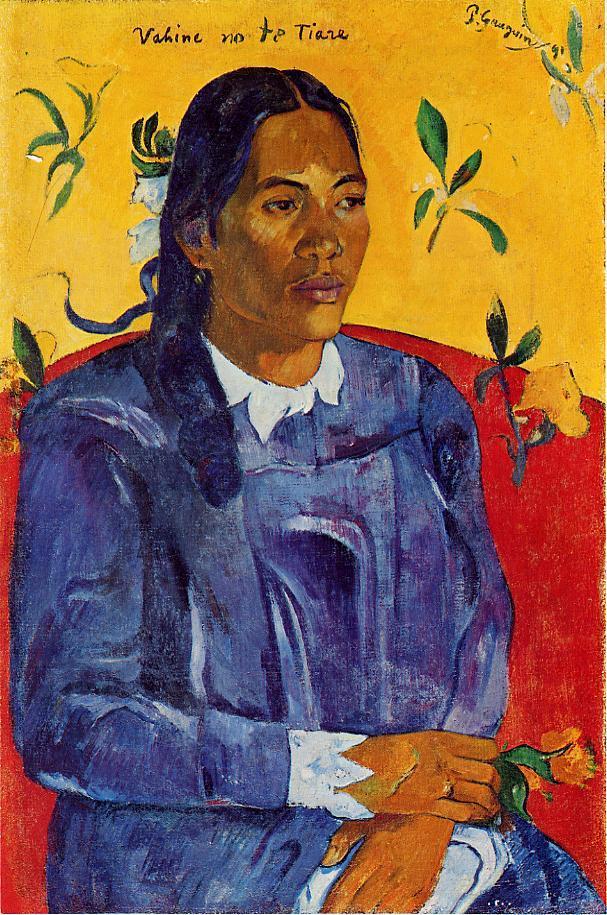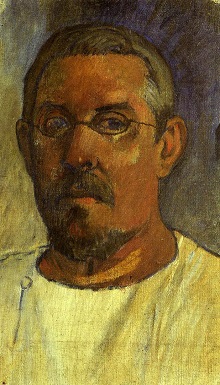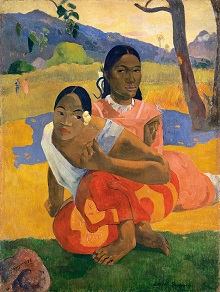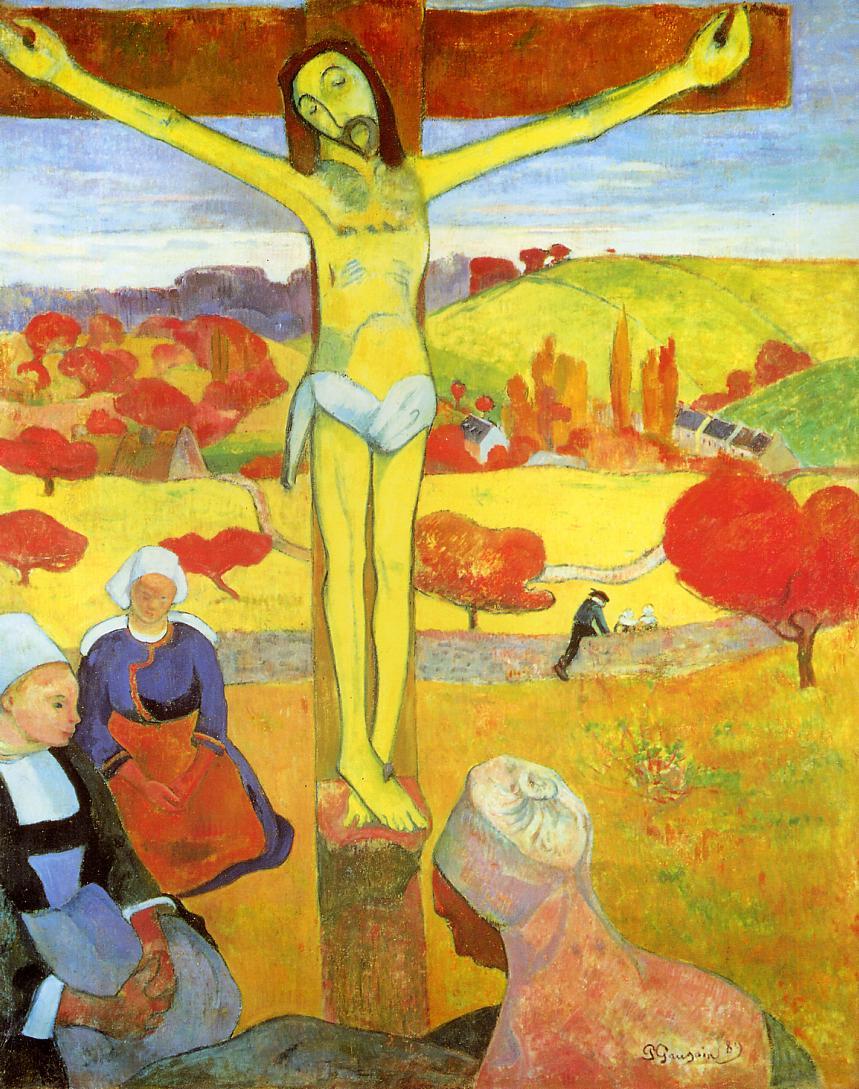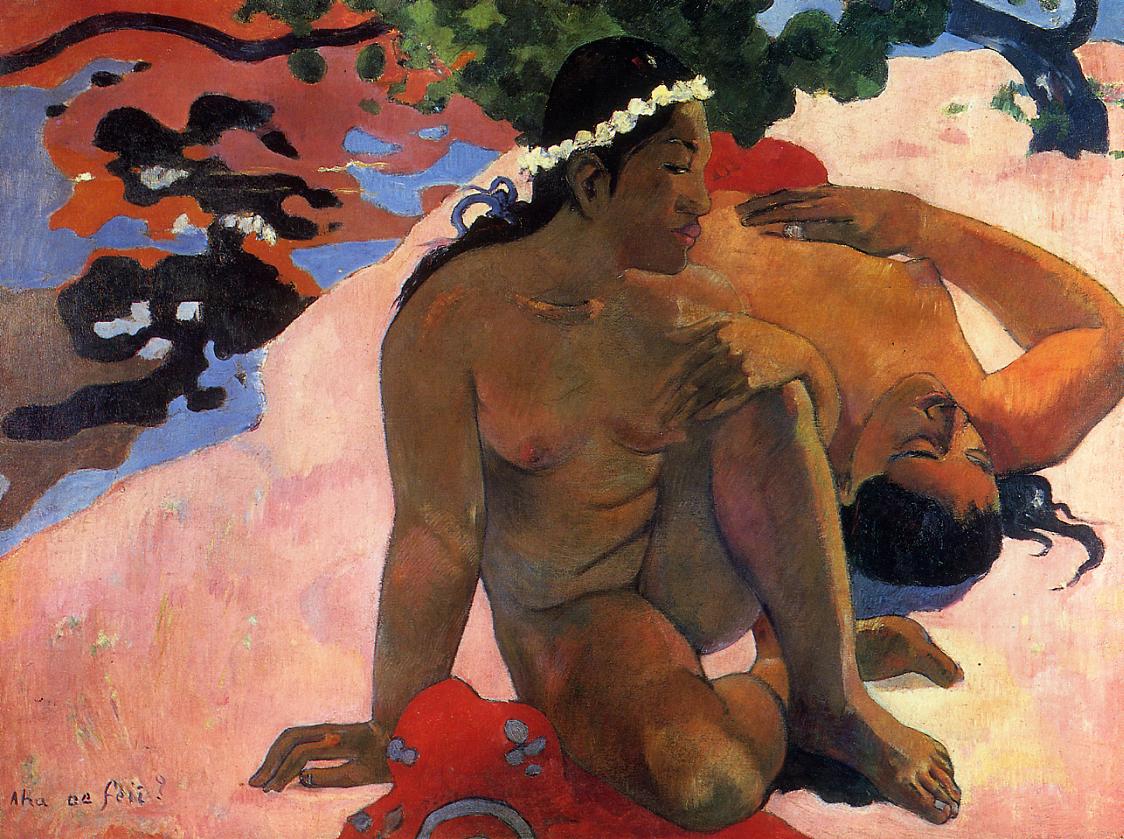Paul Gauguin
Gauguin (Gauguin) Eugène Henri Paul (06.07.1848, Paris - 05.08.1903, pos. Atuona, Marquesas Islands), French painter. In his youth he served sailor, from 1871 - a stockbroker in Paris. In the 1870s. alone took up painting. In 1883 threw Exchange and dedicated himself entirely to art, which led to poverty Gauguin, a break with the family, wandering. In 1886 lived in Pont-Aven (Brittany), in 1887 - in Panama and on the island of Martinique, in 1888 he worked for two months (with W. van Gogh) in Arles, in 1889-91 - mainly in Le Pouldu (Brittany) . Early years was due to Impressionism. In the future rejection of bourgeois civilization awaken the interest in folk art, with its naive perception of the world, the art of archaic Greece, the Middle Ages, Ancient East.

Self portrait with palette
1894 92x73cm
The search for generalized images of the mysterious meaning of phenomena, has long been of interest to zastylomu way of life that Gauguin sought in Brittany and Martinique Arles ("Vision after the Sermon", 1888, National Gallery of Scotland, Edinburgh; "The Yellow Christ", 1889, Albright Gallery Buffalo), Gauguin pull together a program with symbolism and lead him and a group close to him young artists (ie. n. Pont-avenskaya school) to create a new painting system ("synthesis") using generalization and simplification of shapes and lines. Cut-off and volume, light and linear perspective and rhythmic superseded by comparing the individual planes of pure color, completely fill out the form objects and to play a leading role in the creation of emotional and psychological damage the painting ("Cafe at Arles", 1888, Museum of Fine Arts. Pushkin , Moscow). Gauguin painting system is further developed in his works created on the island of Tahiti (Oceania). He went there in 1891, carried away by the creative quest and the dream of an ideal society. Seemed Gauguin, here, far from European civilization, man lives in harmony with the generous tropical nature, giving him freedom from the struggle for existence. In 1895, after a brief return to France Gauguin forever leaving in Oceania (first in Tahiti and in 1901 on the island. Hiva Oa). Although the colonial reality does not meet the utopian dream Gauguin., he creates in his paintings a sense of pristine paradise that is full sun and spiritually integral inhabited by people living in harmony with nature ("Tahitian pastorale", 1893, Hermitage, Leningrad, "Brod" 1901 Museum of Fine Arts. Pushkin; "And the gold of their bodies", 1901, Museum of Impressionism, Paris). Painting, Oceania, like carry exotic flavor unfamiliar world and the poetic structure of Polynesian culture and mythology, opened, the first European painters. Emotional richness of color, flatness and static composition, organic fusion of decorative and monumental beginning, novelty and significance of images characteristic of the works of Gauguin largely stimulated creative pursuits painters of the early 20th century. He worked in the field of sculpture, drawing, ceramics. In a number of literary and critical works he gave a theoretical justification of his creative method.
